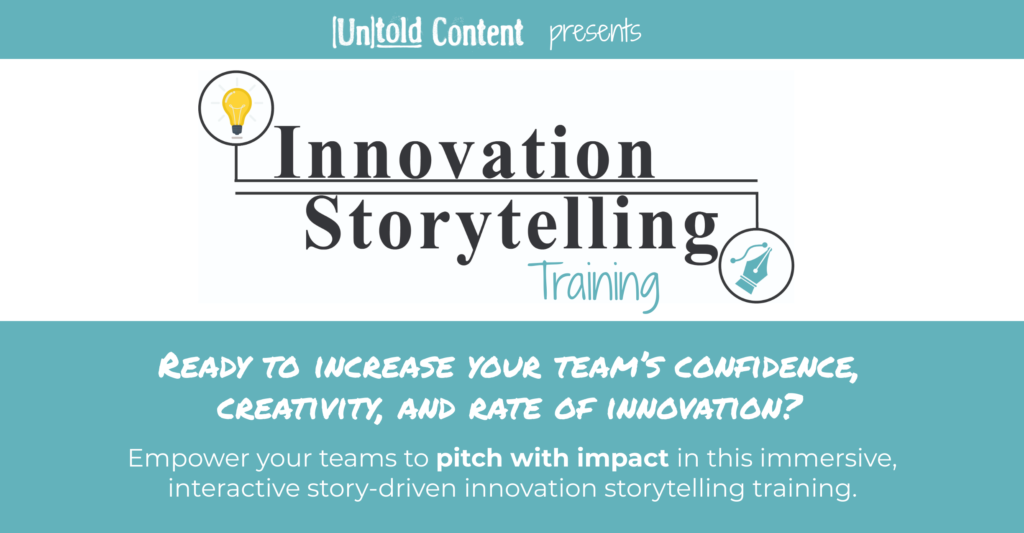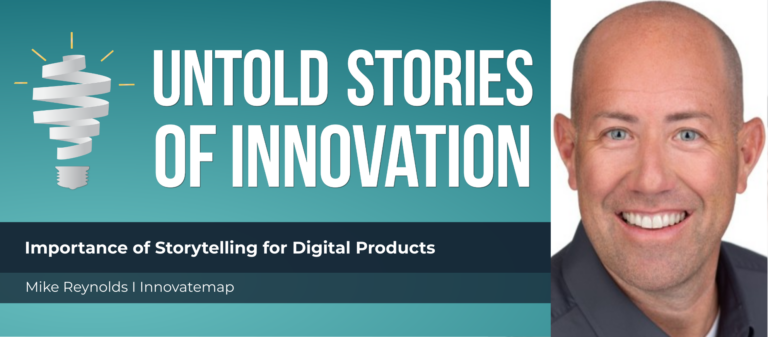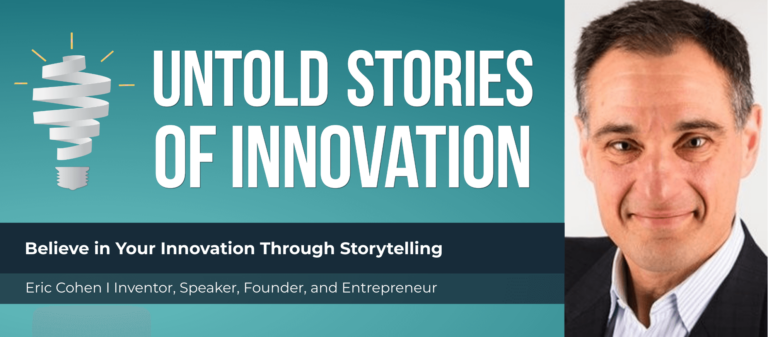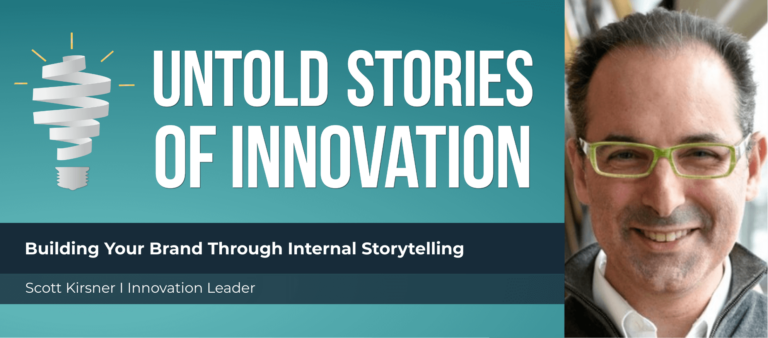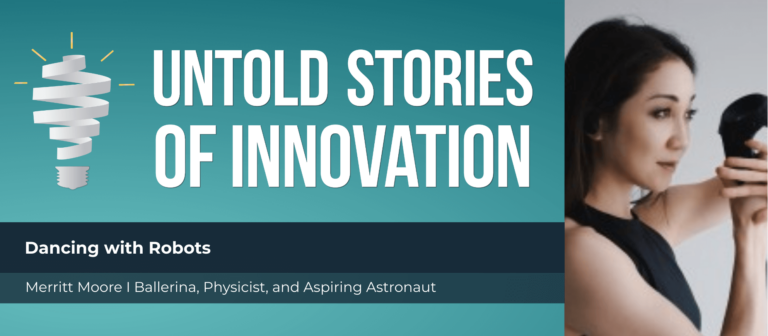Dressing the Part with Liana Chaouli
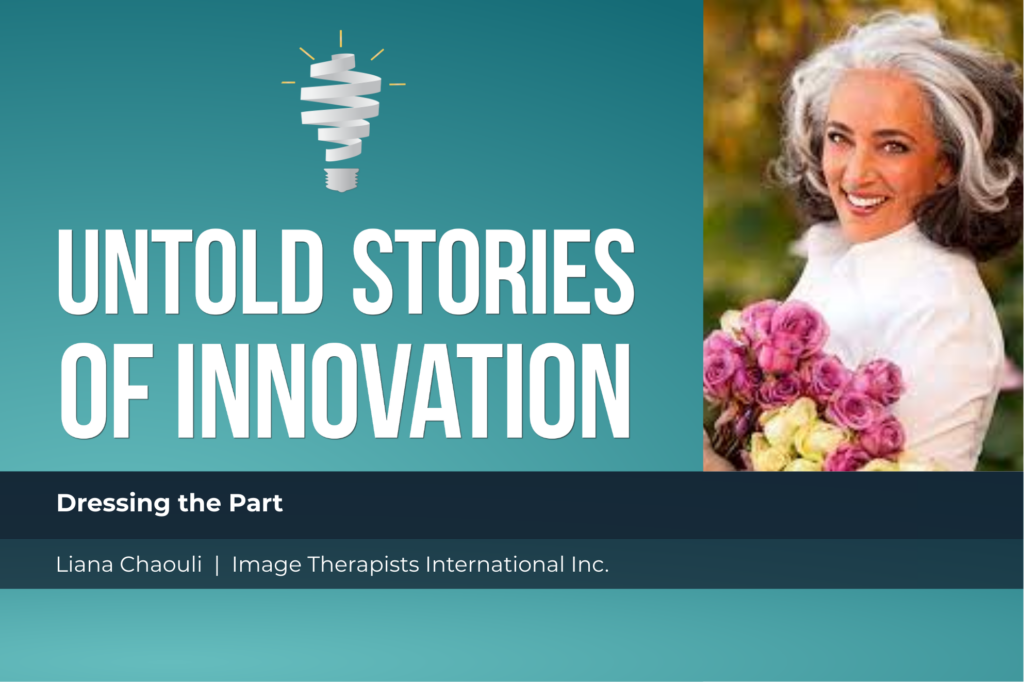
Dressing The Part - Untold Stories of Innovation
“I want to marry and blend the worlds of therapy and the world of image and clothing, because wherever you go, there you are. And you can't leave pieces of you behind.” — Liana Chaouli
From today’s episode you’ll learn:
We speak with Liana Chaouli, Founder and President of Image Therapists International Inc., a globally recognized thought leader, style expert, mentor, and educator in Dressing The Part. She is also the bestselling author of “YOU are a Masterpiece: how to dress a more powerful and authentic YOU.” Liana sits down with us to talk about her career-long story of providing a transformation of clothing through the empowerment of a wardrobe. Liana shares her take on innovation storytelling and its relevance in what we wear, and how we express ourselves in our self images.
Check out her free video series, “Discover Your Essential Formula” and follow Liana on Facebook, @LianaChaouli and @ImageTherapy, and Instagram, @lianachaouli.

Liana Chaouli is the President and Founder of Image Therapists International Inc. and a globally recognized thought leader, style expert, mentor and educator. Ms. Chaouli, provides transformation through the empowerment of wardrobe. She has spent over two decades consulting CEOs, celebrities, and political figures on matters of self-image. She is also the bestselling author of "YOU are a Masterpiece: how to dress a more powerful and authentic YOU." Liana challenges leaders to show up at their best, be vulnerable, be authentic and be bold - all characteristics of top leaders and whole human beings.
This episode is powered by Untold Content’s innovation storytelling training. Increase buy in for your best ideas in this immersive and interactive, story-driven experience. Where your teams refine storytelling techniques for their latest projects, prototypes and pitches—and get inspired by 25 epic examples of impactful innovation stories. Learn more at untoldcontent.com/trainings/innovation-storytelling-training
Katie Taylor [00:00:04] Welcome to Untold Stories of Innovation, where we amplify untold stories of insight, impact and innovation powered by Untold Content. I’m your host, Katie Trauth Taylor. Our guest today is Liana Chaouli. She is the president and founder of Image Therapists International Inc. and a globally recognized thought leader style expert, mentor and educator. Ms. Chaouli provides transformation through the empowerment of wardrobe. And I cannot wait to talk more with you today about innovation, storytelling and how it gets expressed and what we wear and in our self images. Thank you so much for being here, Liana.
Liana Chaouli [00:00:45] Thank you, Katie. Thank you for making space for this innovative thought idea, which it was 40 years ago or thirty five years ago when I first was telling people about this, that they would say to me, what you do, you want to do what? And I said, yeah, I want to marry and blend the worlds of therapy and the world of image and clothing, because wherever you go, there you are. And you can’t, you can’t, like, leave pieces of you behind. I mean, people try, but that’s called schizophrenia. So I decided I had this pivotal moment where I saw that amazing, powerful women were not bringing all of themselves to a conversation, like a piece was always hidden because they were not masterful at it. And usually that piece was the masterpiece that we get to live in our bodies. And I thought, how strange. You know, you have a triple Ph.D. and you raised kids and you speak tons of languages. But when it comes to this body, this masterpiece that we get to live our lives in, you have no mystery. So I set out on a journey to create mastery in the domain of your masterpiece.
Katie Taylor [00:02:09] I love the way of wording the story, and there’s a surprise, too, to our conversation today and I want to make sure we’re including her on the call. But J.J. Snow, who is the chief information officer of Air Force Aflex, is also with us to talk about this marriage of the way that we can think more innovatively about our wardrobe and its impact on our self images. So Liana, tell me more about how I love the way that you word your body is a masterpiece that is unique in and of itself. I don’t think many of us look at it that way. And I know especially for women, you know, we have all kinds of issues around imposter syndrome and phenomena. We just did a massive first meta analysis on imposter syndrome at Untold Content recently with one of our clients. And it does impact women and minorities more strongly in terms of feeling like you’re not who you don’t deserve to be at the table. So how does wardrobe play a role in that?
Liana Chaouli [00:03:14] Yeah, what a beautiful conversation is starting for the world. Beautiful conversation, Katie. So I’ve known about, like in my body, known about and understood and lived the experience of. The power of the empowerment of wardrobe. I’ve lived it since I was a child. And I’ve lived in many different ways, and the reason why you and I are even here talking about this and why Image Therapist International came to be and how the process of image therapy was born is actually my mother. So my mother is the reason for why this is even happening some years into my practice. I would call this a practice because it’s a daily routine. It’s like your skin. And then there’s your second skin with these, which is your clothing. So our clothing is closer to us than our breastfeeding to children. Our clothing is closer to us than our lover. Our clothing is constantly on our skin, speaking through our skin to our brain and our heart and our soul. And wherever we show up that little conversation about how that clothing is fitting, how it feels, how it makes us feel, what we give it permission to show us up as all of that comes into the room when you show up. And I’ve known that since I was a child and I didn’t realize that that was like the driving factor until my mom one day I was speaking to like two thousand image consultants. I was doing a keynote in Washington, D.C., and she lived in New York. And my mother and I have had a very tumultuous relationship, very difficult relationship until I was about forty five. And so she comes into this room and she says, I want to hear you speak. I’ve never seen you speak on a big stage. She comes in, she gets the keynote. I don’t realize that she’s in the breakout session, which has about one hundred and twenty women in it. And I just say please ask your questions at the end. And she starts speaking and I hear her voice and everything inside me just collapses. And I think, oh my God, what is this? My mom, what is she going to say? And she says, I don’t have a question, but I have a comment. I want to tell you a story. And I’m at the front of the room losing my breath. And she says, inches, as I wanted to tell you, that when I was a young woman, I was very sick in bed all the time. And my two and a half year old daughter would go into my closet, rip on the clothes until the hanger broke, bring everything laid out on top of the bed that I was sleeping in with the covers over my face because I was so sick. And the shoes and the scarves and the hat and the purses. And then she’d come and she’d gently lift the covers and she’d whisper in my ear, Mommy, Mommy, please get dressed. Because when you get dressed, then you will feel beautiful. And then you and I can go out and we can have fun together. Mommy, Mommy, please get dressed. And in tears. She continues and says, I could not follow my daughter’s invitation, but you can because the same little girl that dressed me is the same woman that has taught you everything that she knows. And I know how wonderful she is because I was her first client.
Katie Taylor [00:06:46] Oh, my goodness.
Liana Chaouli [00:06:48] And so my mother is the reason every time I see a woman in pain, in the discomfort of this beautiful masterpiece, that we get to live it because she’s too big, too fat to heavy, too skinny, too tall, too dark, too brown, too loud, too soft, too quiet, too boobs, too big as… too big, whatever it is, whatever the conversation of the less-than-ness of the shame that’s attached to this magnificent masterpiece that we get to live in. Every time I hear it, I feel it. I see it. I want to leap in and I want to pull the covers off these beautiful women’s faces. And I want to say, please put on these beautiful clothes, because when you do, we can all go out and play together.
Katie Taylor [00:07:43] Yeah. Oh, my goodness. Liana, thank you so much for sharing that. How did you react when you were on stage in this room of people for that?
Liana Chaouli [00:07:59] So this room was supposed to be for 40 people. And I’d ask the organizers to do a bigger breakout to give me a bigger breakout session because there was going to be more people in there after a keynote than you go to break up. So there were hundred and twenty people standing in a room of 40 and we were all crying together. Yeah. And I asked my mom to come up to the stage. It was actually one of those pivotal healing moments for both of us because I’m the oldest. I was very resistant. I’m outspoken. I come from a Persian Jewish background where girls don’t speak up. I got married at 16. I had my daughter at 18. And I got divorced at twenty one, and so I was always the one, you know, the thorn in people’s sides, especially in my community. And when I created Image Therapists International, it was for the sake of women speaking their truth and living in this body that we get to have without you twisting yourself into a pretzel or or not being good enough because you’re taller or shorter or browner or louder or you know. Why do we as women have to twist ourselves into some pretzel so we both fit fashion. So this process of image therapy that I created this year, the antenna, you be who you are and the clothing needs to be for who you are. It needs to fit your essence. It needs to be fit, your coloring. You’re never going to twist yourself into a pretzel to fit what fashion is saying. And so when I became a fashion designer, it was on the basis of who is in front of me. So I only did custom clothes. And in that process I realized, you know, there’s this mother that comes in with these two twins and she says you have to dress them. But the same because they’re 18 and they have to find husbands. Persian woman, of course. And I said, no, I’m sorry, ma’am. I’m not going to do that. These are two different people. No, they look the same. They get the same dress. They have to find husbands. And asking these two young women about who they are and one of them said, I want this dress and I had to be cut down to here and I want my boobs to show and I want everyone to see me. And I’m going to find myself a husband. And I’m like, OK. I turned to her sister, who looks exactly the same, has exactly the same imprint and looks alike. And this is what I said. So how do you want to be? I don’t want to go to this party. You know what? I don’t even like the way I do. I don’t want to dress. I don’t want to go to this wedding. I’m never going to get married to a boy. So here’s two girls looking exactly the same. And when they opened their mouths, everything changed when you looked at their body language, they were like from two different universes. So I realized, oh, my God, there’s a formula that every human being has. So I created something called your essential formula, give your coloring of your body structure and then you have the sound of your voice. So you’re looking at me right now, Katie, or you saw a picture. Can you imagine what it was like? I’d be very different.
Katie Taylor [00:11:44] Not at all.
Liana Chaouli [00:11:45] And people don’t think about this. They don’t think they enter a room. And the three dimensionality of your amazing… of your masterpiece shows up. Now, that doesn’t mean you have to be an extrovert. That doesn’t mean you have to be anybody else but you because everyone else is taken.
Katie Taylor [00:12:01] Yeah. What’s amazing to me is that in all of my professional experiences and I’m in my mid thirties, this is not talked about. It’s felt deeply, but it’s really there’s not a lot of transparency or mentorship around this. And there was one video, a TED talk, I think, that I saw when I was a graduate student and as a graduate student at the time. Anyway, for me, my journey, I had very little money. I felt out of place with a lot of older male academics and was needing to present at conferences for the first time and have a voice and let that voice be heard and have room at the table, if you will. And it’s amazing that this one TED talk and I’ll try to link it in the show notes. You may have seen it. It’s about how before you walk onto a stage or into an interview, you should do the body talk. Yeah, it’s about power. Yes, yeah, yeah, yeah. So I started… I still do that but, but I do feel like it’s a little, it never struck me as having the same level of depth that you’re describing with image therapy. It’s a little superficial, like it’s, it’s sort of like our posture and we pose to reflect power, which is important. But it didn’t go to this level of thinking of inner transformation.
Liana Chaouli [00:13:26] It’s Amy Cuddy. I know exactly which talk you’re talking about. And there is a space for that conversation. Yes, it’s valid. All of it is valid that what my work is about or my conversation, my invitation to anyone who’s listening to this is not about that’s not OK or this is not enough or that it’s about you beginning here. We begin inside. So this is two years ago when I went to Jordan, I got invited by one of the princesses of Jordan. We created a deeper level to the healing art of image therapy. And so we were Princess Noor and I. We were talking a lot about this. And she said, come, come, come and visit. Let’s talk about this. So so I’m in Jordan. And she had been so unbelievably gracious and we. She’s very much a proponent of women’s rights and girls rights and children having their voice, and she said, well, how do you present this in a way that people actually understand it? And because you haven’t seen this work and when we went around, we had like five, six, seven, eight speaking engagements. And I was presenting this to the bank to bank it to all their managing directors. And half of the women were covered with hijabs, gorgeous, gorgeous women. And what was so interesting about this, I saw, you know, it doesn’t matter whether I’m presenting this in Paris to fashion models or designers or whether I’m presenting it in the Middle East. We all have the same conversation that’s going on inside. At the bottom of the bottom of the bottom, there’s a little tiny conversation of will I ever be good enough, no matter how beautiful you are, no matter how powerful you are, no matter how much you learn, no matter how many degrees we have. And that’s what I’m a champion for, to let go of the bottom of that barrel because it’s not valid. It’s not a valid conversation, the conversation of lack, the conversation of lack. It’s just a conversation that’s like a dark wolf, if we feed it, it’ll stay alive.
Katie Taylor [00:15:48] And so you found, as you’ve worked with different groups of women, that there’s a sort of global or universality to that inner voice.
Liana Chaouli [00:15:57] Yes, there is. And we can go back into our history and we can find the moment where we made that contract. So it’s enough when a child that is creative comes out of his mother’s bedroom and goes with it with her mother’s G-string or bra on her head. Right. And she comes out, she’s like all excited. Look, I get it. I’m going to do this now. Right. She gets all excited and she wants to do that. And she wants to do it like I’m so excited. Mom and I have a new heart. OK, so she goes out and all the mother has to do is just one single half breath of a disapproving gaze. She’s there to say anything, and we all know that gays, we all know it because we know it in our bodies, we’ve all experienced it as children from our parents, from whoever. And that child in that moment makes a contract. And the contract can be anything from not good enough. I can’t be creative. The child there’s another difference between a bra or G-string or a hat. The child is just using something to get itself excited. And the creativity of children is boundless. And sadly enough, then we shut that door and we shut another door and then we grow up and we shut another door and somebody says, you’re fat. And we shut that door and we shut. So we are in this cocoon. Debbie talks about it and her beautiful book, The Dark Side of the Light Chasers, she says where these castles and then somebody walks in and doesn’t like the living room and somebody else walks in into our castle and doesn’t like the dining room. And then we shut off all these rooms inside of ourselves until we live in the little tiny hallway on the floor between the kitchen and the bathroom. And that’s where we get to live, because that’s the only place that no one criticized.
Katie Taylor [00:17:59] Right.
Liana Chaouli [00:18:01] But see, here’s the thing, here’s the agency that we have when we get to recognize and acknowledge who we are, when we get to recognize this masterpiece, just pretend there’s no one out there for a minute when there’s no one out there. No one can come and attack you except we do a pretty good job of abusing ourselves inside our brains just by ourselves. We don’t need bad boyfriends in our bed because there’s a bad girlfriend sitting right here in my brain. And I give agency to that voice. I would say, you know, your brains are not a good neighborhood to go into by yourself.
Katie Taylor [00:18:41] Yeah, that’s a good point. Well, we do. And then it becomes real and there’s no evidence for it.
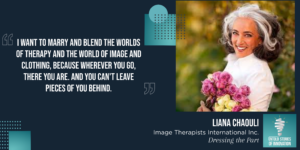
Liana Chaouli [00:18:52] Like, when I do my training or I work with clients, I say, well, where’s the evidence for that? You’re fat, that you’re ugly, that you’re whatever. And they say, well, it’s in the mirror. And I say, Really?
Liana Chaouli [00:19:08] Show me. Because I don’t see, you know, I had this beautiful actress, a famous actress, can’t say her name, she’s standing in my studio. We’re doing an up level. I put a dress on. I’m just going to get you a glass of water. I’ll be right back. I come back in three minutes, and the dress is full of tears. Her face is wet. And I said, why are you crying? And she says to me once to the mirror, and she says to me, It is impossible that that beautiful woman in the mirror is actually me standing here. I am not that beautiful.
Katie Taylor [00:19:47] Wow.
Liana Chaouli [00:19:48] And that’s someone. Who’s getting accolades from the whole world all the time? But what’s really happening inside is the nourishment is coming from the world. But if I can’t allow it in, then my masterpiece will just contract and shrivel like a plant that’s not getting watered. And so the work of self-image therapy is really seeing the blueprint that I have on the inside and the blueprint that happens on the outside, which is the cloak, the clothing, the wardrobe, which happens to be my second skin when those two are in harmony. And I can show up in the world in comfort because comfort shows up in my voice, it shows up in my face, it shows up in every single way that I connect to the universe and the world. And mostly it shows up when situations are difficult and there are breakdowns and I choose to stand in my beauty, I choose to stand in the glory of who I am. And that’s where freedom and empowerment lives, I love and it doesn’t get fed from the outside. It gets fed from in here, right?
Katie Taylor [00:21:13] Yeah, yeah. Can we share with you your thoughts especially in professional settings and career settings? There’s you know, and I think this is true for every social setting. And so I’m a rhetorician. And so I’m always thinking of similar things. But from the aspect of language and how it shifts, depending on who you’re talking to and what context and what community and constantly evolving. Yeah, and I think that our second skin, as you call it, our clothing choices, it’s the same. Right. They’re constantly shifting based on the situations we’re in, the environments we’re in. And as we and in some ways, obviously, there’s a socioeconomic aspect to wardrobe and some of the limitations that can make someone have that inner voice that says I don’t belong here can come from not being able to afford the certain clothes or fit in to certain settings because there’s sort of a we’re always, I think, with language. And so here’s where it comes in. As I get a rhetorical thing for me, we enter a discourse community and we listen for how people talk and we try to meet them where they’re at and connect, because at the end of the day, we all want to be a tribe. Right. And so we’re listening and we’re trying to match their language and mirror. Mirror. Yeah, exactly. And wardrobe situations I feel are so so maybe even more than language have that same kind of community interaction. So anyway, I’d love to hear your thoughts on that. It comes to navigating who we are, what kind of professional lives we want right. For ourselves and the ways that wardrobe can block or open.
Liana Chaouli [00:23:09] Yeah. So we need to do like a five part series. Right. I was talking to your husband about that because I said JJ and I, we have these ideas and we want to do a five part series. Here’s why this is so important. So I put one of my taglines is I provide transformation through the empowerment of language. Choices and wardrobe. So the ontology of language, so you as a linguist or as a… what you did, you say you’re rhetorician. Rhetorician. OK, so I’ll call any of them fine that they’re similar. So I say this to you from a woman who dreams in five languages. I speak six or seven, I dream and five. Wow. So when I say something to you in English, it doesn’t feel the same as if I would say in Dutch I can put it and put it in me. And so if I were to speak to you in German, inside of me said something very different would be happening, or Farsi, Narvo or. Yeah, right. So it’s very different now. The same. The same. So let’s just take that context and say, OK, well, what if you’re going to France or Germany or Italy or Persia? So the context of clothing choices, let’s start there. People don’t have clothing choices. People have reactions. Most people do not choose their clothing. They think they do. But really, they’ll tell me more. I have 40 years of proof of that, so most people do not use their clothing as a frame. They use it as armor because the conversation of like is so powerful. Look, the reason why I am not in the fashion industry is because the fashion industry and I don’t want to say this about everybody, but I do know a lot about it. And they make you bleed on your own lack and then try to sell you pieces from a place if you’re not good enough. I don’t do that. I pick you up where you’re at and I want to empower you so that I don’t care where you buy your t-shirts at Target or at Neiman Marcus. You need to know what looks good on you so that when you find a piece, even especially when it’s in the secondhand store, that you can make yourself look the most magical and beautiful and comfortable and amazing because the tools you are choosing are the tools that your masterpiece needs. So I don’t believe in any of this. Oh, because you’re this you have to have these clothes in order to make yourself feel better. That’s not how my brain works. Look, I used to make five thousand dollar evening gowns. So it’s not a question of how expensive is the piece, I know that our society lives by, that our society lives by labels, our society lives by the messaging of the labels. What if you had tools in your sanctuary, in your closet? But most people don’t have closets. They have museums, they have trash cans, they have storage units. They don’t have their second skin and live in a sanctuary.
Katie Taylor [00:26:40] Oh, tell me more about this and what do you recommend?
Liana Chaouli [00:26:44] You’re right, though, is going to have to be a five part series. I’m telling you. I was talking to Stephen earlier and I said we have this idea of a five part series that we really want to give you. So, you know, J.J. and I have talked about what happens when you’re wearing a uniform. OK, yes. Now you can have an army uniform. You can have an Air Force uniform. You can be a judge and have a uniform. You can have all kinds of uniforms. And then there are people who become so small in their expression into the world that they only wear this and this and this and this. And I grew up in a city called Homburg that had uniforms. Every woman had to have a pleated skirt and they had to have their Burlington’s socks and that they had the little thingies and the uniform. That means you’re this. So self-expression and understanding your masterpiece is a path to a Ph.D. in design of who you are.
Katie Taylor [00:27:46] I love that.
Liana Chaouli [00:27:47] Which wasn’t taught to us when we were children, not a thing, right?
Katie Taylor [00:27:52] Yeah, not at all.
Liana Chaouli [00:27:53] First. First we’re told to talk. Then we talk. Then they tell us to shut up then. And then they tell us, oh, get creative, make Legos, do this. Then you get creative. Then you do that. Then you come out of your mother’s bedroom with underwear on your head and then they tell you to stop being creative. So it’s like push, push, push, pull.
Katie Taylor [00:28:10] Yeah, absolutely.
Liana Chaouli [00:28:12] And then we grow up and then we’re writing poems, meaning we’re creating our life in language with words like writing on a chalkboard and with our right hand and with the left hand. We have a wet sponge and we’re making it all go away. So you’re the creativity that’s possible and the and the possibilities that are possible are inside of our closet. And what is going on in your closet? If you really look and are honest with yourself, that’s what’s going on in your mind and in your heart. People have different sizes. They open their closets and their clothes are talking at them. You got me. You never want me. There’s a five hundred all the time on me. And why are you wearing me? Guilt, guilt, guilt and cortisol, adrenaline, cortisol. And then you wonder why women are carrying belly fat and you wonder why women don’t feel sensual and you wonder what it’s like. It’s a five part series. What can I tell you? What should walking into your closet in the morning feel like in an ideal?
Katie Taylor [00:29:19] You know, when you’re kind of striving for a healthy self-image, I can tell you that every single piece in your closet has a mother, a brother, a sister and shoes to match love of everything.
Liana Chaouli [00:29:36] And you know why they do? Because every single piece has to first and foremost look amazing on you. Right. And once it looks amazing on you, every single other piece that comes into your closet or onto your body, because it looks amazing on you, it’s going to have mothers and brothers and sisters and cousins and shoes to match and earrings and necklaces because it is all an expression of your blossoming. Now, this is the same for men. But people buy clothes that walk in a half an hour before they do, and then they leave the party an hour after the person does and totally drunk. And the only thing people remember is that you remember that red suit. Oh, my God. Was that a Picasso? What was that? But they don’t remember the person. So people don’t buy clothing to frame them. People buy clothing. Most people, before they get this work into their bodies, they don’t even know that they’re doing it. They buy clothing to hide the boobs, to hide. But I do think that either it’s not good enough. Oh, my God, I wish I was skinnier or fatter. Shorter. You know, it’s always about a Band-Aid. So when you ask what would a beautiful wardrobe look like, it’s an expression of who you are. It’s an effortless, easy, magical way to show up who you are in all your amazing this. Most people don’t have that. Most people don’t have a sanctuary. Most people have this expression. They go into their closet and they’re frustrated. They open the closet. They’re even more frustrated. Then they have to go to a party. They don’t know what to wear. They have maybe two things that are their fallbacks, but they wear 20 percent of their closet, 80 percent of the time. They go in there trying to get ready for a party. They’re naked. Their bed has a huge pile of clothes on it. Their bed is dressed and the closet is empty and they still don’t know what to wear.
Katie Taylor [00:31:37] Right.
Liana Chaouli [00:31:38] Yeah, that’s a closet full of clothes, nothing to wear. And so it is all of these pieces that have gotten me into a place where, you know, with this you can really learn this. This is not so difficult Gyges going through right now. And to see me as a mentor, the biggest joy is to see my clients soar. I never want anyone to be dependent on me. I want to give you a task. I want to give you a principle. I want to give you lessons and then I want you to go out and come back, learn some more, implement what you’ve learned and watch how people around you go, what you love. What happened to you? Did you lose twenty pounds because you can do that as.
Katie Taylor [00:32:25] Yes. What do you say to you know, I think especially in a time of the pandemic, what we wear is so dramatically changed. So what are your thoughts and feelings? What conversations are you having with your clients now? Should we be fully dressed every day or not?
Liana Chaouli [00:32:43] What are your thoughts on that? So when you don’t have pants on and you’re only dressed from the waist up ninety five percent of your language is body language. It will show up in your voice and it will show up on camera that withhold or that not telling the truth shows up somewhere. It can show up at the end of the sentence. It can show up with the lack of you really empowering yourself in your language. You know, I was doing a conference call and I talked about this three hour class to lots of thought leaders and business owners. And I said, look, right now, the camera on your resume or on your phone or on your computer is the Ivy. It is the ivy that you get to choose the tool that you get to choose to put your authentic self into someone else’s heart. And for those of us who have spoken on big stages, five thousand, ten thousand, fifteen thousand people, we’re not at the back of the room anymore. We are on other people’s laps. Like we’re on five million people have us as speakers, as mentors on their laps, and we are in their bedroom, in their bed with them right up close. Yes, up close and so personal where they’re sitting on the toilet. I mean, for one. But no, it’s true. But this is what’s happening.
Katie Taylor [00:34:17] Right, Right.
Liana Chaouli [00:34:18] OK, and so this is now encouraged is even more the urgency is dialed up the urgency for your authenticity and for your own comfort level with yourself between you and you and God when you’re in the authority of who you are, when you can express your agency through this medium. People are going to know you’re telling the truth. The person on the other side, it’s not the content of what you’re speaking about, it’s the delivery of the content included in the authenticity of the bubble of who you are. Can you let another person know? That you see them. And that begins with being able to see yourself, I say this is an exercise that I give my students, my clients, I say seek your sister’s greatness rather than her guilt, seek another person’s greatness rather than their guilt, because the world today is not built to seek greatness. The world today is to blame. Going to blame this person. And the first sister that you see in the morning, the first person you see is yourself in the mirror. So go seeking your greatness and bring that greatness to this conversation. And that’s essentially that’s essentially what I do.
Katie Taylor [00:35:44] I love it. Well, how Lianna, thank you so much for sharing that. There’s so much to dove into more from this conversation. We didn’t get to talk more about uniforms. We didn’t get to talk about affirmations and things that are routines and habits and ways we can change them in order to transform our ways of looking at the mirror. But I think we will make these five part series uniforms.
Liana Chaouli [00:36:10] Let me just give you one sentence on uniforms. Uniforms will not do the diversity of who you are. Justice. That’s right. So, yeah, when you are in uniform, there are different ways to show up authentically.
Katie Taylor [00:36:24] That’s a beautiful point, yes, and I’m fascinated by the ways uniforms allow for certain action and disallow for other actions, and that’s not just literal uniforms. That’s also how we show up and how we even if we’re working on a wardrobe of choice. And there’s still so much, I think, to talk about when it comes to social pressures and how we navigate that professionally. Yeah, a big conversation came in, but just enough, you know, all of that.
Liana Chaouli [00:36:56] But this is the big conversation and what we give meaning to look, uniforms are in the domain of meaning. So you have your domain of language. So everything that is created in the world is created in the domain of language. When you make a declaration. When I make a declaration, then I am the authority to make a declaration on my life. OK, uniforms fall into that, so I am saying this is my declaration of being in the world because I’m committed to the Air Force or I’m committed to the clergy or I’m committed. So a uniform says a lot to the world and then there’s still the person behind the uniform. So it’s a big topic. It isn’t just like we can’t just say, oh, well, let’s just scratch the surface on that. It’s a deep topic.
Katie Taylor [00:37:50] Yes. Yes, I agree. I know. I wish we had more time today to talk. Would you mind leaving us with you’ve already shared so much advice and so much about how to sort of reframe the way we look at clothing. But could you share with us something that all of us can do starting tomorrow morning after listening to this conversation?
Liana Chaouli [00:38:12] You can start it right now. So I’m writing a TED talk on not wearing black because black is the absence of color. Each of you listening to this, you have your own personal block and your own personal block can be achieved by looking deeply into your eyes and seeing with your eye colors. Look at your hair color, your eye color, look at the color of your veins. Look at the color that is contained in your skin. And there’s a color in there. It’s either Navy if your eyes are blue or chocolate brown, if your eyes are brown or your hair is brown, it’s a dusty rose. It’s a burgundy. It’s purple. A color that you can wear taken to its darkest level will be your personal black.
Katie Taylor [00:38:57] I love it.
Liana Chaouli [00:38:58] And it is the most powerful experience to put black on one shoulder, silent black and put your personal black on the other shoulder. Go stand in front of a mirror with the light, hit your face and notice the difference. Because Silent Black will always make you look tired and haggard and lifeless and your personal black will always make you shine.
Katie Taylor [00:39:21] Wow. Thank you so much for sharing that. I would love to hear people’s reactions to that and their experiments with it. So as you’re listening, try this out and see if you can find your personal black. I can’t wait to hear your TED talk on this topic. How wonderful. Liana, I’m so grateful that you’ve made time to talk with us today. Where can listeners follow you and your work and learn more about image therapy so they will get a beautiful little gift series that talks about your essential formula, which for everyone would be really helpful. So it’s you go to be the offer dot com.And you sign up with your name. It’s a beautiful little series that tells you all about what’s included in your essential formula. And you can learn, you learn a lot.
Liana Chaouli [00:40:22] And if you’re interested, just, you know, connect with me on Instagram, Facebook, go to “betheoffer.” There’s so much knowledge out there. I love giving first. So I think that everyone should have an experience of this if they want to. And there’s a lot out there for you to see. Follow me on Instagram Liana Chaouli or go to Facebook and follow me there. And I’d love to connect with you. Every person is a world unto themselves, and so I get to know you. It’s even better.
Katie Taylor [00:40:54] Yes. Thank you. Thank you so much. I can’t wait to continue the conversation and we’ll keep everyone updated as we dove in a little deeper to some of these topics, hopefully in the future. Thank you, have a wonderful evening. Thank you for your invitation. Thank you. Thanks for listening to this week’s episode. Be sure to follow us on social media and add your voice to the conversation. You can find us at untold content.

